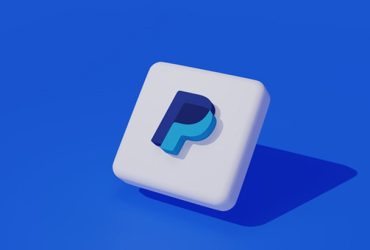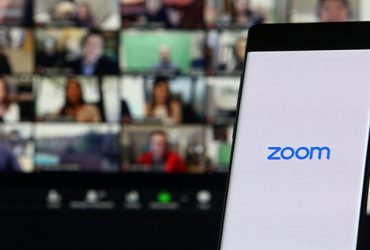You might realize at some point in your project work that you lack a separate UX specialist. It’s vital to have an expert with UI/UX knowledge (two separate experts in large-scale teams and projects), as they guide the design decisions from the viewpoint of usability and user experience quality.
However, integrating a UX designer into an already existing team is not as easy as you might suppose. The new expert’s entry might be accompanied by friction, team resistance, and organizational flow issues you can anticipate and minimize. So, if you’re unsure about how to build a design team, read on to find workable recommendations and tips for adding a UX expert to your workflow hassle-free.
#1 Clarify What UX Is
The major hurdle for hiring and successfully integrating a UX designer into a team is a lack of clarity about what UX as such is. The employer may have unrealistic expectations about the new staff member, thus confusing the new employee and the team and causing workflow disruptions.
In a nutshell, getting a UX designer on board promises the following for your company:
- Creating meaningful, relevant experiences for users of your products.
- Consistent branding.
- Top-tier usability of digital products.
- Ensuring positive user perceptions and responses arising in the process of product use.
- Intuitive system navigation.
- A sound degree of UI customization to target user preferences.
- UI cues that help users achieve their goals.
- Visibility of essential design elements to simplify navigation and use.
- User-centered design.
- Apps that add value and are appealing in use.
Every company is a unique ecosystem that interprets and applies the UX principles differently. Thus, to find a perfect match for your team, you need to determine the specific set of skills and work philosophy you’re looking for in the candidates. No need to make a non-suitable UX expert adapt to your new rules; it’s much easier to find the one who clicks with your team as a missing piece of a puzzle.
#2 Set Clear Goals
Now that you know what to expect from a UX designer, it’s time to clarify what exactly you need from that expert for your business processes and products. It’s essential to know your unique problem and understand why you’re hiring a UX expert for the team.
To achieve this, you should thoroughly analyze your business needs and the problems you expect to solve. Some examples include:
- Getting a UX expert in visual effects and interface design to resolve the problems and falling KPIs of an old, outdated website or app.
- Finding a specialist with robust research and strategy skills in UX to design and launch a brand-new, innovative digital product.
These are product-specific considerations for the UX designer’s selection, but you need to expand your focus beyond these hard skills to ensure that you’re hiring the right person. Add a set of soft skills, like teamwork and leadership, to the list of your requirements so that the new staff member merges into the existing staffing infrastructure without friction.
#3 Check With Your Team
As we’ve already noted, hiring a new person for an existing team is always a challenge, as you need to consider the existing team’s chemistry and dynamics to find a proper fit for it. If the hired UX designer is not a good fit for the team, numerous frictions, delays, and interpersonal conflicts can arise, causing the project’s delays and stagnation.
Thus, don’t underestimate the power of personal fit when making hiring decisions. Audit the team’s skills and talents to ensure that the new staff member will complement the existing skill set. No need to hire an expert with duplicate, redundant expertise; their presence in the team may cause unnecessary concerns and job safety worries among the staff.
#4 Check Your Workflow
Once you’re planning to hire an additional team member and integrate them into the work process, clarity about workflows is essential. You should review the software development pipeline and analyze the role distribution to see how the new team member can integrate without disrupting the accustomed processes.
An inside-out understanding of the methodology used in your company can help with new hiring decisions. Some companies still stick to the waterfall software delivery method, while others have adopted agile methodologies like Scrum. Each method comes with specific staff involvement dynamics, group and individual work stages, and deliverable evaluations. So, you need to be 100% sure where your new UX designer will fit into the existing product creation cycle.
#5 Design an Insightful Job Interview
The final step in getting ready for UX designer recruitment is setting up an interview protocol. You should know exactly what to look for and what questions to ask. It’s also good to know what answers you expect to hear to those questions, as many variants are possible. Here are some suggestions for looking beneath the surface and understanding whether the candidate will merge with your team effectively.
- Explanation skills
By asking a UX design candidate about their work and experience, you can assess their self-presentation and explanation skills. These skills should work equally well in UX design and oral communication.
- Interest in your product/company
Designers should be genuinely interested in their employer’s company and products to deliver exceptional results.
- Portfolio
Here, you should focus not only on the samples’ esthetic value but on the projects’ variety, the practical side of their use, and the KPIs of the finished projects.
- Tools
Ask the candidate about the software with which they are well-tuned and proficient. It’s critical to know that the designer is familiar with the toolkit used in your design team.
- Workflow and approaches
Every designer’s work processes are different. Knowing them is vital to clarify whether the candidate can blend with your team’s well-established procedures.
- Inspiring UX examples
It should be not something trivial like Google or Instagram, but some non-obvious references to original products.
- Non-professional interests
Ideally, your UX designer should have interesting hobbies connected with making esthetically pleasing things.
Time to Recruit!
As you can see, hiring the right UX expert is impossible without inside-out awareness of your internal business peculiarities and expectations from that new staff member. Follow our tips, and your team will be enriched with a new complementary skillset and a perfectly fitting person.










